Molecular mapping of movement-associated areas in the avian brain: a motor theory for vocal learning origin
- PMID: 18335043
- PMCID: PMC2258151
- DOI: 10.1371/journal.pone.0001768
Molecular mapping of movement-associated areas in the avian brain: a motor theory for vocal learning origin
Abstract
Vocal learning is a critical behavioral substrate for spoken human language. It is a rare trait found in three distantly related groups of birds-songbirds, hummingbirds, and parrots. These avian groups have remarkably similar systems of cerebral vocal nuclei for the control of learned vocalizations that are not found in their more closely related vocal non-learning relatives. These findings led to the hypothesis that brain pathways for vocal learning in different groups evolved independently from a common ancestor but under pre-existing constraints. Here, we suggest one constraint, a pre-existing system for movement control. Using behavioral molecular mapping, we discovered that in songbirds, parrots, and hummingbirds, all cerebral vocal learning nuclei are adjacent to discrete brain areas active during limb and body movements. Similar to the relationships between vocal nuclei activation and singing, activation in the adjacent areas correlated with the amount of movement performed and was independent of auditory and visual input. These same movement-associated brain areas were also present in female songbirds that do not learn vocalizations and have atrophied cerebral vocal nuclei, and in ring doves that are vocal non-learners and do not have cerebral vocal nuclei. A compilation of previous neural tracing experiments in songbirds suggests that the movement-associated areas are connected in a network that is in parallel with the adjacent vocal learning system. This study is the first global mapping that we are aware for movement-associated areas of the avian cerebrum and it indicates that brain systems that control vocal learning in distantly related birds are directly adjacent to brain systems involved in movement control. Based upon these findings, we propose a motor theory for the origin of vocal learning, this being that the brain areas specialized for vocal learning in vocal learners evolved as a specialization of a pre-existing motor pathway that controls movement.
Conflict of interest statement
Figures




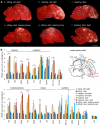

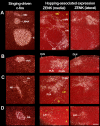
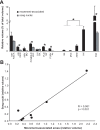
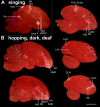


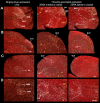

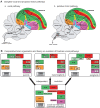
References
-
- Janik VM, Slater PJB. Vocal learning in mammals. Adv Study Behav. 1997;26:59–99.
-
- Sanvito S, Galimberti F, Miller EH. Observational Evidences of Vocal Learning in Southern Elephant Seals: A Longitudinal Study. Ethology. 2007;113:137–146.
-
- Poole JH, Tyack PL, Stoeger-Horwath AS, Watwood S. Animal behaviour: Elephants are capable of vocal learning. Nature. 2005;434:455–456. - PubMed
-
- Nottebohm F. The origins of vocal learning. Amer Natural. 1972;106:116–140.
-
- Jarvis ED, Scharff C, Grossman MR, Ramos JA, Nottebohm F. For whom the bird sings: context-dependent gene expression. Neuron. 1998;21:775–788. - PubMed
Publication types
MeSH terms
Grants and funding
LinkOut - more resources
Full Text Sources

